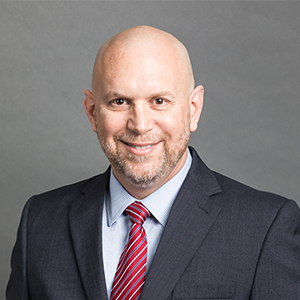
COVID-19 has lead to dramatic changes in how we live our life. Could you imagine me telling you last year that you would be purchasing multiple facemasks to match different clothing and different styles? How about the idea that most cities in the United States will have been under quarantine for months? Ok, I know this one is hyperlocal, but how about the fact that the Toronto Blue Jays (Major League Baseball - MLB) will not be playing any home games this year in Toronto due to COVID-19, but will be playing them in Pittsburgh instead. Conversely, the Pittsburgh Penguins (National Hockey League - NHL) will not be playing any home games in Pittsburgh due to COVID-19 but will be playing those home games in Toronto.
I remember being in a pre-operative waiting room with a family member who was
waiting to have elective surgery when this coronavirus first started to spread.
While sitting there, I received a news alert on my phone that the hospital I was
in had confirmed it's first three patients that day. Who would have guessed that
the fundamental way hospitals would operate would be changing so
much?
During the initial wave of COVID-19, hospitals across the world
diverted resources from routine care to stand and fight this pandemic. Personnel
was diverted from various departments for drive-thru testing and ICU units to
care for the victims of this illness. There are stories of medical staff around
the globe working around the clock to comfort, treat, and provide solace to
their patients. But what happened to all of the other, Non-COVID
patients?
First, because of statewide quarantines, fewer people were
venturing from their homes, reducing the number of accidents on the roads. Next,
people re-evaluated their need to visit an emergency room. More and more people
sought out their care through telemedicine and urgent care centers or did not
seek medical attention. Some estimates report that emergency departments saw a
40% or more decline in non-COVID related patients. Most disturbingly, the
postponement of needed emergency and preventative medical care could lead to a
sharp rise in more severe diagnosis and lengthened treatments later.
The
combination of many governors ordering stay-at-home orders and the fear of the
general public to venture near healthcare facilities has caused many people to
not keep appointments with their physicians. This decrease in preventative care,
such as mammograms and cancer screenings, will have long-term consequences in
the near future. "Even with coronavirus, we still have healthy people who get an
illness and need to go to the emergency room," Dr. Christopher Freer, director
of emergency medicine at RWJBarnabas Health said. "Heart attacks don't stop."*
Further, many would-be patients are seeking out palliative care at pharmacies,
Eastern Medicine storefronts, or their local supplement shop.
The reality
is that this unprecedented pause in non-COVID related healthcare is going to
lead to a substantial burden on the medical infrastructure at a time that many
experts are predicting "the next wave" of COVID infections.
So how can a healthcare facility
prepare?
First, hospitals across the countries must continue
the public relations campaign to show that their hospitals are safe. By
following CDC guidelines to prevent the spread of the virus and the strict
enforcement of these guidelines amongst their staff, vendors, and patients,
hospitals can take the first step to regain public confidence.
While the
media focus has been on COVID patients, healthcare facilities need to have
adequate resources to diagnose, stabilize, and treat non-COVID patients
properly. An Emergency Department that releases a non-COVID asthma patient
complaining of shortness of breath after stabilizing their breathing with a
nebulizer treatment, but not thoroughly examining their heart could lead to a
massive heart attack.
Lastly, healthcare facilities need to prepared for
the inevitable surge in non-COVID. Hospitals need to prepare for an increase in
cardiac cases stemming from unchecked or undiagnosed hypertension caused by the
decrease in preventative care visits. Additionally, experts are predicting a
wave of cases relating to strokes, cancer, and diabetes.
Let's all hope
next year I am not writing about purchasing multiple Tyvek suits for formal
occasions.









 ©
- CMS Imaging, Inc. All Rights
Reserved
©
- CMS Imaging, Inc. All Rights
Reserved

Comments
Leave a Comment